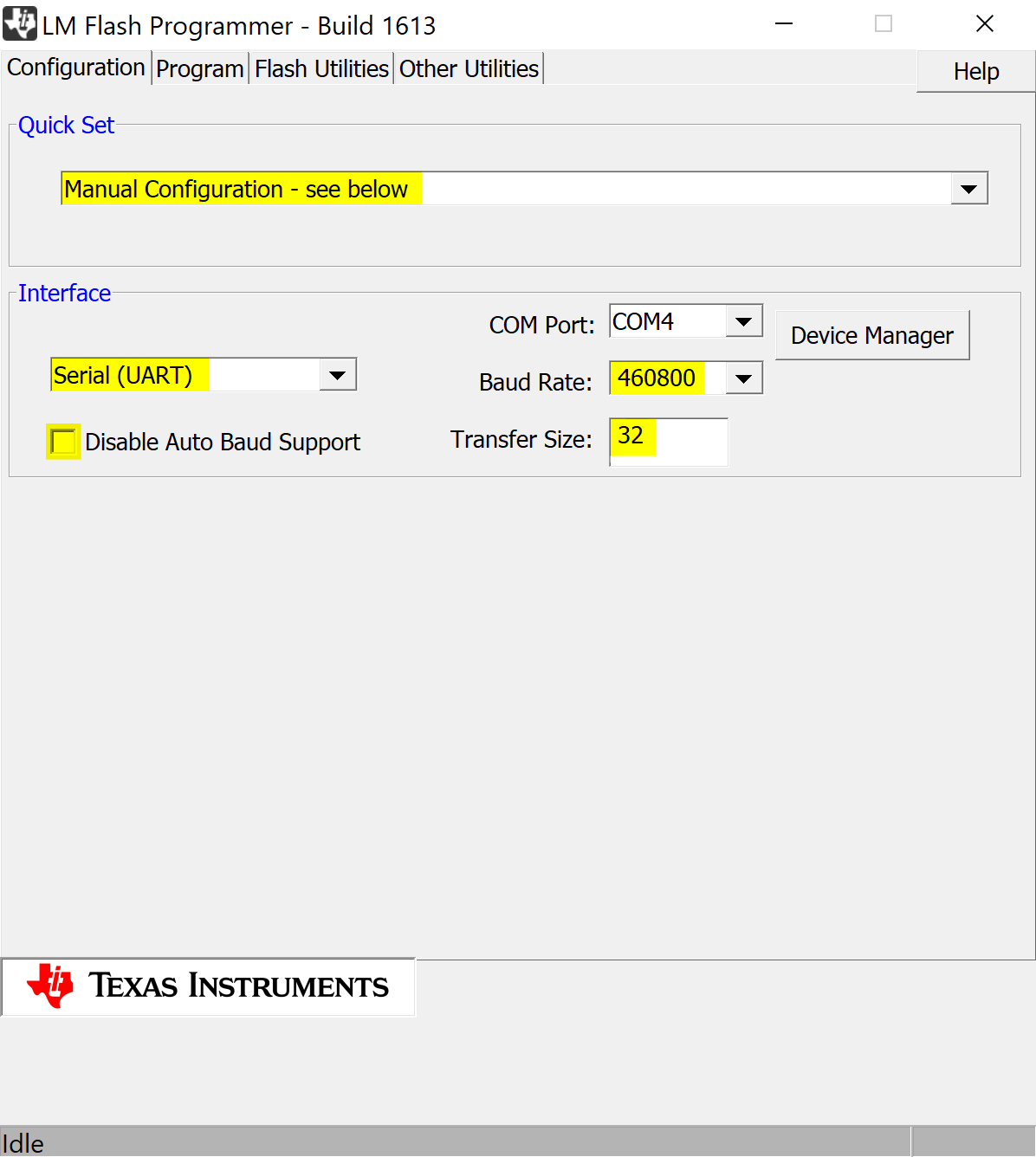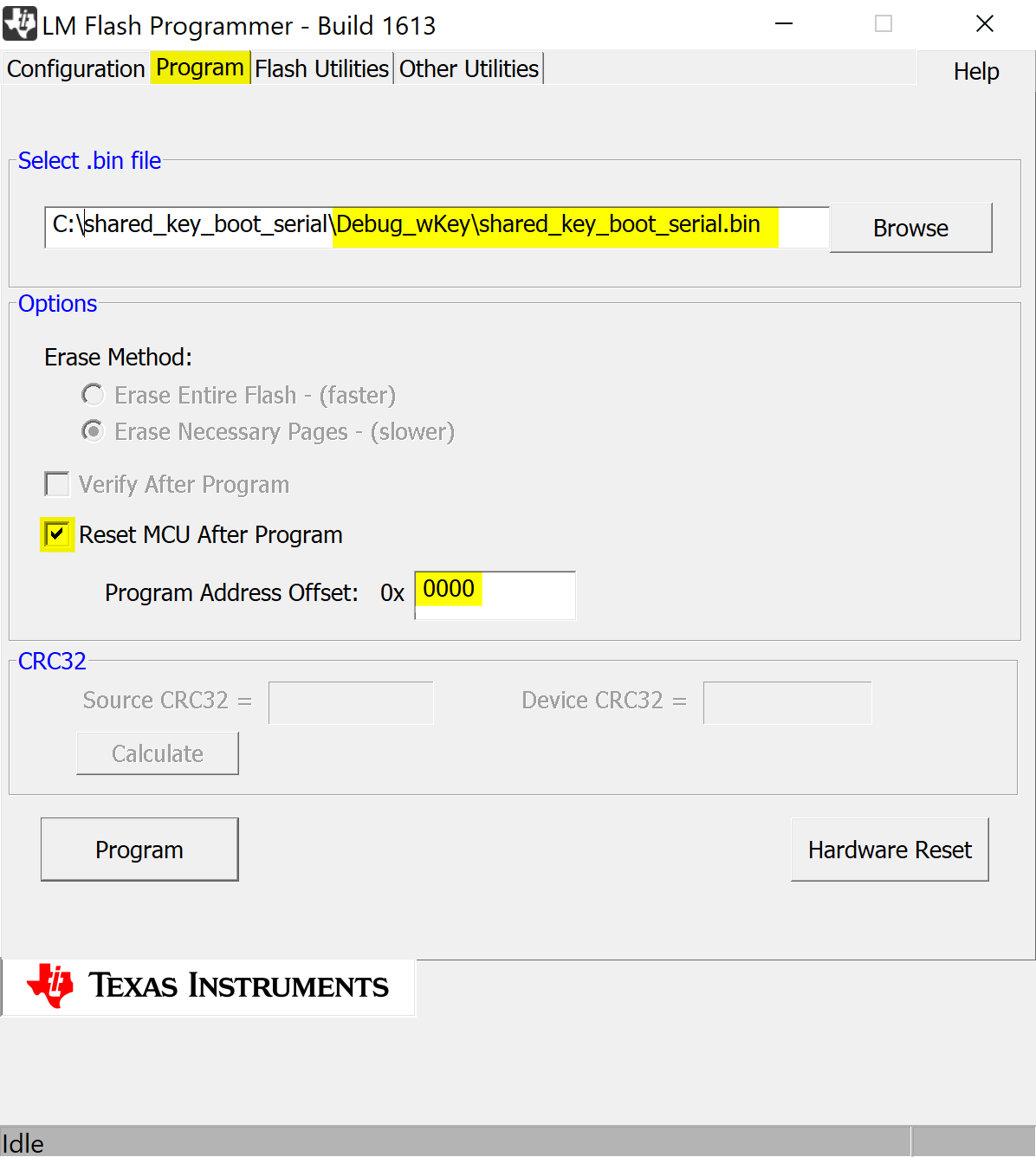SPMA083 January 2022 TM4C129CNCPDT , TM4C129CNCPDT , TM4C129CNCZAD , TM4C129CNCZAD , TM4C129DNCPDT , TM4C129DNCPDT , TM4C129DNCZAD , TM4C129DNCZAD , TM4C129EKCPDT , TM4C129EKCPDT , TM4C129ENCPDT , TM4C129ENCPDT , TM4C129ENCZAD , TM4C129ENCZAD , TM4C129LNCZAD , TM4C129LNCZAD , TM4C129XKCZAD , TM4C129XKCZAD , TM4C129XNCZAD , TM4C129XNCZAD
- Trademarks
- 1Implementation
-
2Example Walk Through
- 2.1 Build Environment
- 2.2 Importing the Examples into Code Composer Studio
- 2.3 Setting Keys and Variables
- 2.4 Running the shared_key_image_encrypt Tool
- 2.5 Running the Shared Key Serial Boot Loader
- 2.6 Returning to the Boot Loader
- 3Summary
2.5.1.2 Using the ROM Boot Loader to Program the Shared Key Boot Loader
Now that the flash is erased, the LaunchPad is executing the ROM boot loader. The prior example for the shared key boot loader utilized a serial interface. This ROM boot loader example uses the same serial interface to demonstrate how to load the shared key boot loader into a blank device.
- Open LM Flash Programmer and set the items on the configuration tab as shown below, selecting the COM port associated with the LaunchPad.
 Figure 2-17 Configuring LM Flash Programmer to Program the Boot Loader
Figure 2-17 Configuring LM Flash Programmer to Program the Boot Loader - Then, on the “Program” tab, browse to the Debug_wKey\shared_key_boot_serial.bin file. Make sure “Reset MCU After Program” is checked and the “Program Address Offset” is set to 0.
 Figure 2-18 Programming the Boot Loader With LM Flash Programmer
Figure 2-18 Programming the Boot Loader With LM Flash Programmer - Click the “Program” button.
After programming is completed, the boot loader executes and copies the keys into EEPROM before erasing them from flash. If the Release_wKey\shared_key_boot_serial.bin file is used instead of the debug version, the boot loader write protects the first sector of flash and lock the JTAG.